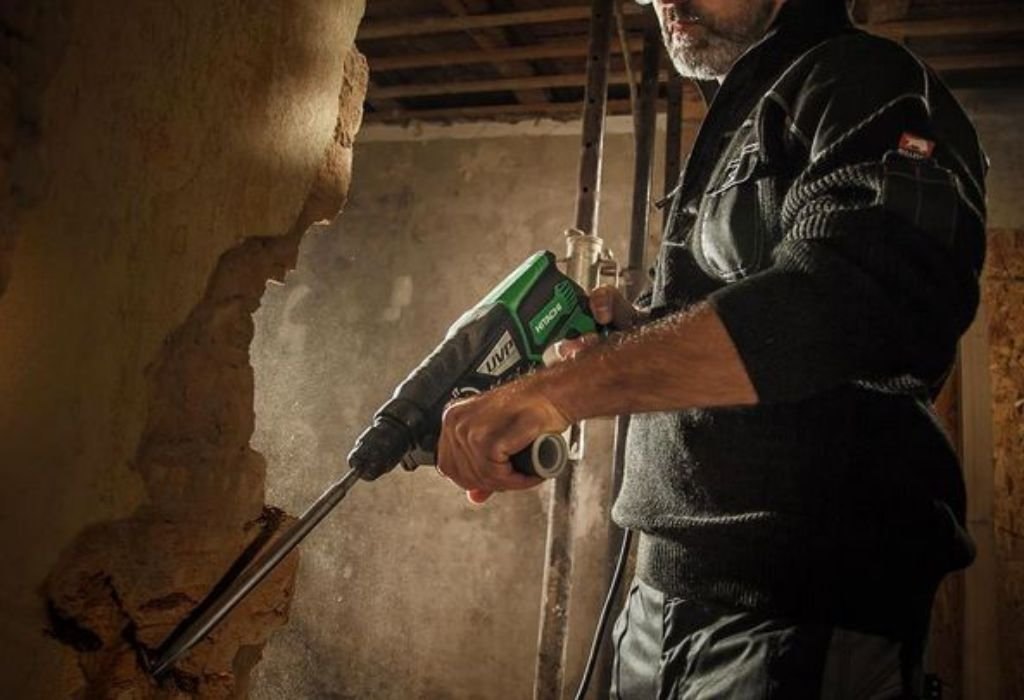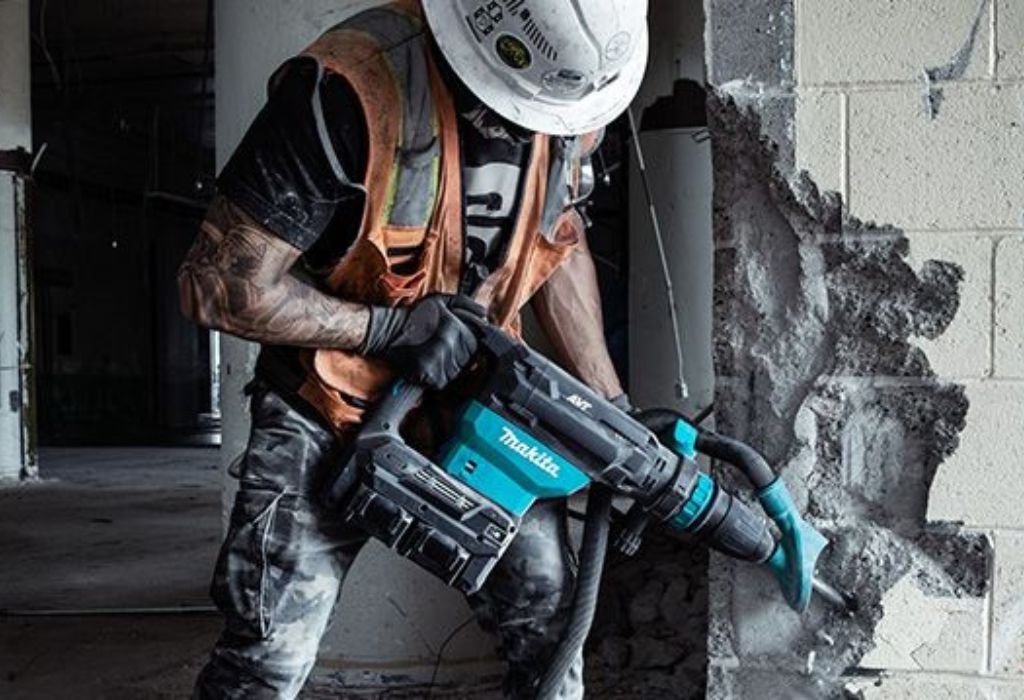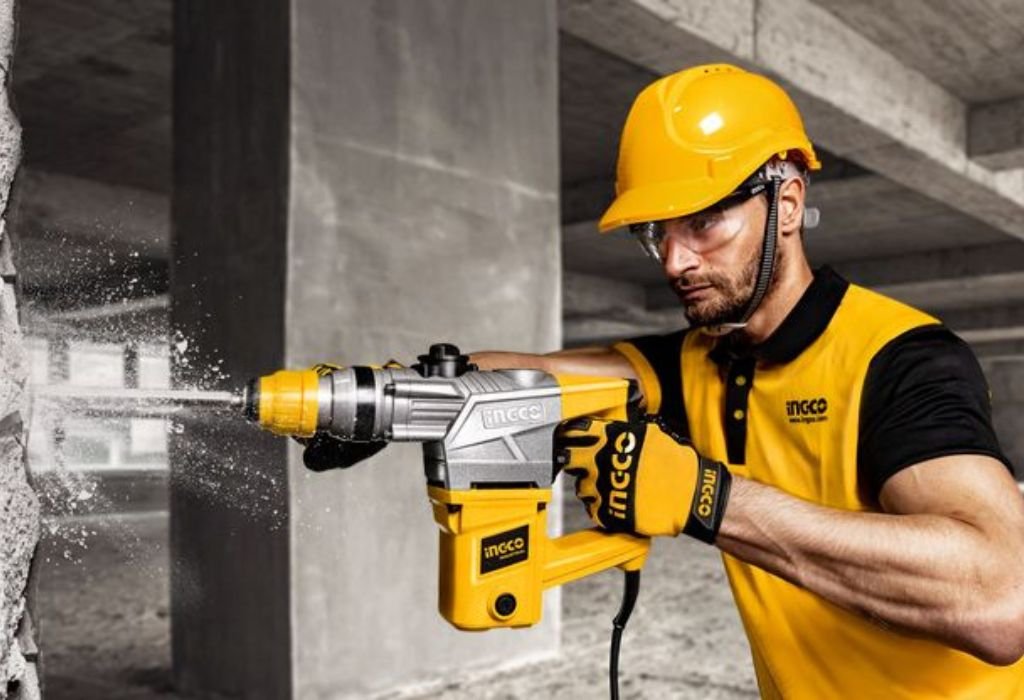The sound of a rotary hammer breaking through concrete is a sign of progress on any construction or renovation project.
Yet frustration quickly builds when the bit becomes worn, stuck, or impossible to replace.
Changing bits may look simple, but many DIYers and even professionals struggle when dust, heat, or improper technique complicates the process.
A jammed bit can waste valuable time, delay projects, and put unnecessary stress on the tool.
The curiosity is natural: is there a correct, safe method for changing bits in a rotary hammer?
The answer is yes, and knowing the proper steps can extend tool life, improve performance, and protect user safety.
Rotary hammers remain one of the most popular power tools for heavy-duty drilling. In fact, the global power tools market is projected to grow beyond $40 billion by 2030, driven largely by demand for concrete and masonry tools (Allied Market Research).
Improper tool handling is more common than many realize. According to OSHA, thousands of power tool injuries occur each year, often linked to incorrect use or maintenance (OSHA).
Something as small as mishandling a bit change can contribute to those risks.
The good news is that changing bits in a rotary hammer is straightforward when the correct process is followed.
By understanding the chuck system, using the right safety practices, and applying a few troubleshooting techniques, anyone can swap bits quickly and safely.
Understanding Rotary Hammer Bits

Rotary hammer bits are not the same as standard drill bits. They are engineered to withstand both rotational force and hammering action.
The most widely used shank systems are SDS, SDS-Plus, and SDS-Max. These designs allow for quick insertion while ensuring bits remain secure during intense vibrations.
Unlike keyed chucks, rotary hammers rely on spring-loaded sleeves that make swapping bits fast. This innovation keeps downtime low on busy job sites.
Choosing the correct bit type prevents unnecessary wear and improves drilling accuracy. Using the wrong bit can damage both the tool and the material.
What is an SDS bit?
It is a slotted drive system that allows easy locking and unlocking.
Are rotary hammer bits different from drill bits?
Yes, they are built for hammer action, not just rotation.
Why does chuck design matter?
It ensures the bit doesn’t loosen under heavy impact.
Can regular drill bits be used?
Only with an adapter, but they are not ideal for masonry.
What are the main sizes?
SDS-Plus is for light to medium jobs, while SDS-Max handles heavy-duty drilling.
Tools and Safety Before Changing Bits
Before changing bits, always prepare the tool properly. Safety is critical since rotary hammers operate with significant power.
Unplug corded tools or remove batteries from cordless models. This ensures accidental activation doesn’t occur.
Gloves should be worn to protect hands from sharp edges or hot surfaces. Bits often heat up quickly during use.
Inspect both the bit and chuck for visible damage. Attempting to force damaged parts may result in breakage or injury.
Do you need to unplug the tool first?
Yes, always disconnect power for safety.
Should gloves be used?
Yes, they protect against burns and cuts.
What if the bit is hot?
Let it cool before attempting removal.
Do all hammers have the same release system?
Most use spring-loaded sleeves, but designs may vary.
Why is inspection important?
Because cracked or bent bits may jam or break.
Step-by-Step Guide on How to Change Bits in a Rotary Hammer
Changing a rotary hammer bit is simple once you know the correct process. Following these steps keeps the tool in top condition.
First, turn off the tool and disconnect power. Safety always comes first.
Next, pull back the chuck sleeve firmly. This releases the locking mechanism.
Insert or remove the bit with steady pressure. Once inserted, release the sleeve to lock it into place.
Finally, tug the bit gently to ensure it is secure. This prevents it from coming loose during use.
How do you know the bit is locked?
It clicks and resists being pulled out.
Can you change bits while powered?
No, it creates serious safety risks.
How long does the process take?
Usually under 30 seconds.
What if the bit won’t release?
Lubricate lightly or tap the chuck gently.
Is force ever required?
Only light hand pressure, never excessive force.
Common Problems When Changing Rotary Hammer Bits

Even with proper technique, issues may arise. Common problems include bits getting stuck, overheating, or not locking properly.
Dust and debris inside the chuck often cause jams. Regular cleaning reduces this problem significantly.
Overheated bits may expand and stick temporarily. Allowing them to cool usually solves the issue.
Incompatible bits may fail to fit properly. Always match bit type to the correct chuck system.
Why do bits get stuck?
Because of dirt, wear, or heat expansion.
Can lubrication help?
Yes, light oil can free a jammed bit.
When should the chuck be replaced?
If it no longer secures bits tightly.
Do cheap bits cause issues?
Yes, poorly designed bits may jam or wear quickly.
What about bent bits?
They must be replaced immediately for safety.
Maintenance Tips for Rotary Hammer Bits
Proper maintenance extends the lifespan of rotary hammer bits. Clean them after each use to remove dust and residue.
Store bits in a dry case to prevent rusting. Moisture quickly corrodes unprotected steel.
Apply light lubrication before inserting bits. This prevents sticking and reduces wear.
Inspect bits for cracks, dull edges, or deformation. Damaged bits should never be used.
How often should bits be cleaned?
After every use for maximum durability.
What is the best storage method?
Dry, sealed cases away from moisture.
Do bits need lubrication?
Yes, a light coat prevents sticking.
Can rotary hammer bits be sharpened?
Only specialized types; most are replaced when dull.
How to extend bit life?
Use the correct size and avoid overheating.
Safety Mistakes to Avoid When Changing Bits
Many accidents occur because users skip basic precautions. The most common mistake is failing to disconnect power.
Another frequent error is attempting to change bits while they are still hot. Burns are a common result.
Never use pliers or tools to force a bit in or out. This can damage the chuck permanently.
Using broken or worn chucks is equally risky. Replacement is the only safe option in such cases.
Can you use pliers to pull bits?
No, it damages the chuck.
Is it safe to change bits while hot?
No, let them cool first.
Why avoid forcing the bit?
Because it can break internal parts.
What if the chuck is broken?
Replace it before further use.
Is PPE always required?
Yes, gloves and glasses reduce risks.
Choosing the Right Bits for Rotary Hammer Drilling
Using the right bit ensures efficiency and safety. Rotary hammer bits come in many shapes for different tasks.
Masonry bits are the most common for drilling concrete and brick. Chisel bits are used for demolition or tile removal.
Spade bits allow wider cuts, while specialty tips handle stone or reinforced concrete.
Bit quality also matters. Premium bits last longer and reduce tool stress.
Which bit is best for concrete?
SDS-Plus or SDS-Max masonry bits.
Can chisels be used in rotary hammers?
Yes, for scaling or breaking work.
What about wood or metal?
They require adapters and lighter settings.
Do brands matter?
Yes, quality bits reduce jamming.
Are universal bits available?
Some exist but may wear faster.
When to Replace Rotary Hammer Bits

No bit lasts forever. Worn or damaged bits reduce efficiency and may even harm the tool.
Signs of wear include dull edges, wobbling in the chuck, or poor drilling performance.
Overheated or bent bits should be discarded immediately. Continuing to use them risks injury.
Professional users replace bits more often due to heavy workloads. Regular inspections ensure safety and reliability.
How long do bits last?
It depends on usage, but replace when dull.
What if bits wobble?
Replace them to prevent accidents.
Does heat damage bits?
Yes, excessive heat softens the steel.
Are cracked bits safe?
No, they should be replaced immediately.
Do professionals replace bits more often?
Yes, because of higher daily use.
Conclusion
Changing bits in a rotary hammer is a simple process when done correctly. The key is to follow safety practices, use the right tools, and perform regular maintenance.
Understanding the chuck system, troubleshooting stuck bits, and knowing when to replace worn parts ensures reliable performance. Proper bit selection also improves efficiency and extends tool life.
If you are wondering how to change bits in a rotary hammer, the answer is straightforward. With the right steps and care, you can keep your tool running smoothly for years while avoiding unnecessary frustration.
This guide explains step-by-step how to change bits in a rotary hammer. It also covers common mistakes, solutions for stuck bits, and maintenance tips to ensure smooth performance on every job.

I’m John F. Nicholas, the founder, lead writer, and drill enthusiast behind 101drill.com. With years of hands-on experience in power tools and DIY projects, I created this platform to share practical knowledge, expert tips, and real-world insights to help others master the art of drilling.
